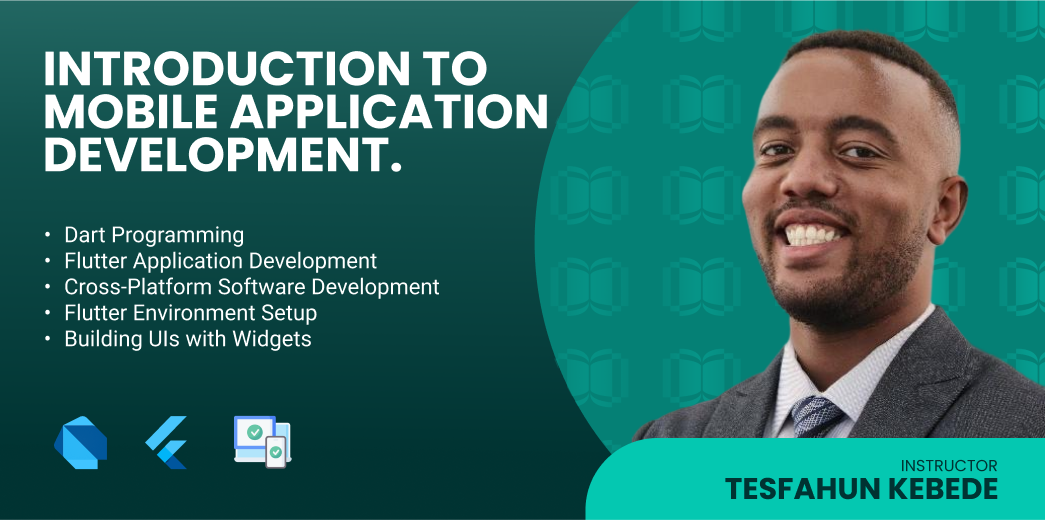Introduction to Mobile APP development

#Mobile App Development
In Partnership With

About the Course
HaHuJobs, in partnership with its parent company Minab IT Solutions PLC, offers specialized training in software development, including Mobile Application Development, along with career opportunities through HaHuJobs job matching platforms. Software development experts provide this three-month extended training, outlined to offer insights on how the training will be delivered, its components, and specific subject areas. The training aims to provide trainees with guidelines and insights on software engineering and specialized skills relevant to mobile application development. It also offers learning methods and best practices under each training category.
This specialized training is administered in both lecture and hands-on lesson practice formats, based on instructions from trainers. The training includes reading and implementation assessments, where trainees submit exercises for evaluation to receive feedback for improvement or qualification. Assignments are given at the middle and end of each training category to measure trainee comprehension. The total duration is 3 months with 24 classes, each with a 2-hour duration.
Trainee Qualification Requirements and Prerequisites
To qualify for this training, individuals need to pass through primary qualifiers, which include a working understanding of specific subject matters in software engineering. A basic understanding of web programming, web development concepts, and programming fundamentals is essential. Each registrant will be evaluated against such measures before enrollment.
Trainees are expected to have an understanding of basic software engineering concepts. This includes, but is not limited to:
- Introduction to Programming
- Web programming, especially CSS, HTML, and JavaScript
- Mobile programming (recommended, not essential)
- Advanced database management
- Basic understanding of GIT
- Basic understanding of the Linux OS and environment
- Basic understanding of software architecture
Mobile App Development
This course focuses on helping trainees grasp key points in the Flutter framework, Dart programming language, Integrated Development Environments (IDEs), Software Development Kits (SDKs), and building user interfaces. It delves into how widgets are structured in the Flutter widget tree and different types of widgets.
- Cross-Platform Development: Trainees will learn about developing software products or services for multiple platforms or environments, with Flutter categorized as a cross-platform framework for supporting various operating systems.
- Dart: An introduction to Dart as an open-source, general-purpose, object-oriented programming language developed by Google and approved as an ECMA standard. It is the primary language used in the Flutter framework for building mobile, web, and desktop applications.
- Flutter: A comprehensive overview of Flutter as an open-source framework for creating high-quality, high-performance mobile applications across Android and iOS. It provides a simple, powerful, efficient, and easy-to-understand SDK for writing mobile applications using Dart.
- Setting up Flutter: A practical session covering the installation of the Flutter and Dart SDKs, IDE plugins, introduction to its package manager, and repository.
Widgets: An in-depth exploration of widgets as the basic building blocks for UI in Flutter. This will include platform-specific widget, layout widget, state maintenance widget, basic widgets and others.
Who should learn this course?
- Junior developers with basic web development knowledge looking to specialize in front-end mobile development.
- Computer science students or graduates seeking hands-on training in modern mobile application frameworks and tools
- Aspiring mobile application developers preparing for entry-level roles or internships.
- Freelancers or job seekers looking to enhance their technical skill set with current mobile technologies.
What you will learn?
- Grasp key concepts in the Flutter framework, Dart programming language, IDE, and SDK
- Build user interfaces by understanding how widgets are structured and their different types.
- Understand cross-platform development principles and how Flutter supports multiple operating systems.
- Utilize Dart as the primary programming language for Flutter.
- Perform practical setup and installation of Flutter and Dart SDKs, including IDE plugins and package management.
- Differentiate and apply various types of Flutter widgets, including platform-specific, layout, and state maintenance widgets.
- Implement basic UI elements like Icons, Image, and Text.
What is required to learn this course?
- Basic understanding of programming fundamentals.
- Prior exposure to web programming, particularly HTML, CSS, and JavaScript.
- Knowledge of software engineering concepts and methodologies.
- Linux OS usage and command-line operations.
- A basic understanding of the Dart programming language and the Flutter ecosystem.
- Access to your own machine and a stable internet connection.
Schedule
Weekday
Weekend
Curriculum
Course Reviews

There are no Reviews available for this course yet!

